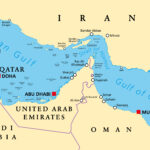A blizzard this week in the drought-stricken U.S. Plains will moisten soil for major crops, but the snow storm made it difficult to feed cattle and reach some cow herds, an agricultural meteorologist said on Wednesday.
Andy Karst of World Weather Inc. said the blast of winter weather dropped a foot (30.5 cm) of snow in many areas with up to 19 inches (48 cm) in the Texas Panhandle on Monday.
“It will benefit most areas but parts of western Kansas and eastern Colorado missed out on the storm, so it remains too dry there,” Karst said. “There was probably a lot of stress to livestock.”
In more good news for farmers, agricultural meteorologists predict light rain in some areas later this week and a larger storm in early March. They say significant winter rainfall and snow have so far eliminated the drought, the worst in 50 years in the United States, in an area roughly from Illinois eastward.
A combination of rain and snow early this week left roughly 6 inches (15 cm) to 18 inches (45 cm) of snow in a widespread area of the western and southern Midwest corn and soybean belt and most of the hard red winter wheat region in the Plains.
The snowstorm contains about 0.50 inch (1.3 cm) to 1.50 inches (3.8 cm) of water that will be added to dry soils in the region, helping the U.S. winter wheat crop when it begins its growth spurt this spring.
But more moisture will be needed in April and May to nurse the crop to maturity and to aid the soon-to-be-seeded corn and soybean crops, meteorologists and crop experts have said.
Commodity Weather Group meteorologist Joel Widenor said very light showers would move into the Northern Plains and dry areas of the western Midwest next week and a larger storm was expected in the first or second weeks of March.
Widenor said it will cover the far southeastern Plains, Delta, southern and eastern Midwest but the recently wet areas of the U.S. Southeast should remain drier.
He said the March storm also would bring a chance for more rainfall to the central and southeastern U.S. Plains but the “forecast has slipped drier than yesterday.”
The weekly Drought Monitor report issued Feb. 21 by a group of state and federal climatologists showed 18.66 percent of the contiguous United States was suffering from extreme drought, up from 17.71 percent a week earlier. The percentage in exceptional drought, the worst category, rose to 6.66 percent from 6.61 percent the previous week.
Kansas wheat farmers welcomed the winter snowstorm, but the drought stress on the winter wheat crop from seeding time last fall until now probably has harmed some of it beyond repair, experts have said.
Don Keeney, meteorologist for MDA Earthsat Weather, said that as of early February, roughly 4 inches (10 cm) to 6 inches (15.2 cm) of rain were needed in Kansas, the top producer of hard red winter wheat, to bring the state out of drought status.
Up to 8 inches (20.3 cm) were needed in a pocket of severe dryness in northeastern Kansas, a big corn- and grain sorghum-growing area. Similar amounts were needed in Nebraska, Texas, Oklahoma, Iowa and Missouri and northern Illinois and Indiana.
(Reporting By Sam Nelson; Editing by Grant McCool)
Topics USA Agribusiness Kansas
Was this article valuable?
Here are more articles you may enjoy.


 Three Insurers Reject Chevron’s $57 Million Claim for Iran Oil Seizure
Three Insurers Reject Chevron’s $57 Million Claim for Iran Oil Seizure  Worsening Weather Igniting $25 Billion Weather Derivatives Market
Worsening Weather Igniting $25 Billion Weather Derivatives Market  China Construction Bank Sued in US Over Reinsurance Fraud Losses
China Construction Bank Sued in US Over Reinsurance Fraud Losses  Michigan Supreme Court Rules Against Couple in Drone Surveillance Case
Michigan Supreme Court Rules Against Couple in Drone Surveillance Case 

